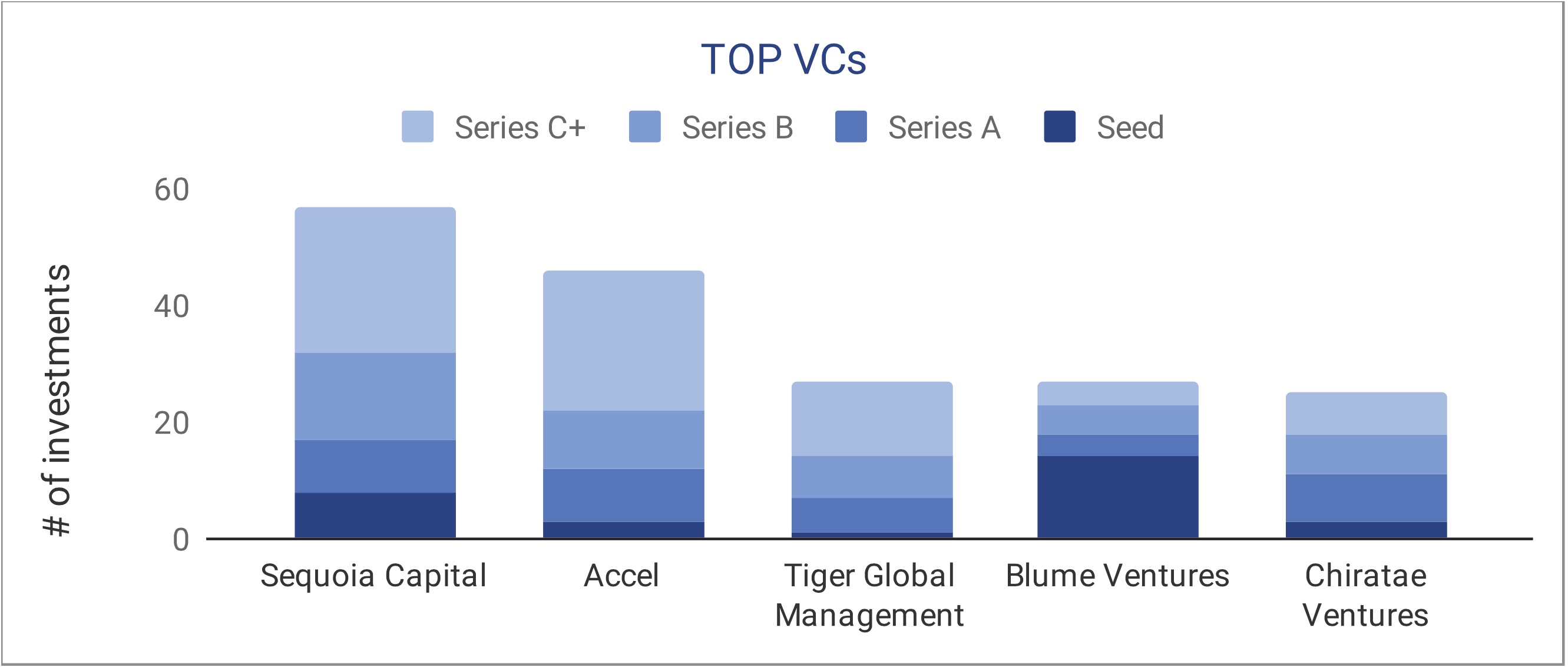Tuesday, December 31, 2019
Another hour!
Another hour!
Another hour!
Another hour!
Another hour!
Another hour!
Another hour!
Another hour!
Monday, December 30, 2019
Another hour!
India’s richest man is ready to take on Amazon and Walmart’s Flipkart
As Amazon and Walmart-owned Flipkart spend billions to make a dent in India’s retail market and reel from recent regulatory hurdles, the two companies have stumbled upon a new challenge: Mukesh Ambani, Asia’s richest man.
Reliance Retail and Reliance Jio, two subsidiaries of Ambani’s Reliance Industries, said they have soft launched JioMart, their e-commerce venture, in parts of the state of Maharashtra — Mumbai, Kalyan and Thane.
The e-commerce venture, which is being marketed as “Desh Ki Nayi Dukaan” (Hindi for new store for the country), currently offers a catalog of 50,000 grocery items and promises “free and express delivery.”
In an email to employees, accessed by TechCrunch, the two aforementioned subsidiaries that are working together on the e-commerce venture, said they plan to expand the service to many parts of India in coming months. A Reliance spokesperson declined to share more.
The soft launch this week comes months after Ambani, who runs Reliance Industries — India’s largest industrial house — said that he wants to service tens of millions of retailers and store owners across the country.
If there is anyone in India who is positioned to compete with heavily-backed Amazon and Walmart, it’s him. Reliance Retail, which was founded in 2006, is the largest retailer in the country by revenue. It serves more than 3.5 million customers each week through its nearly 10,000 physical stores in more than 6,500 Indian cities and towns.
Reliance Jio is the largest telecom operator in India with more than 350 million subscribers. The 4G-only carrier, which launched commercial operations in the second half of 2016, disrupted the incumbent telecom operation in the country by offering bulk of data and voice calls at little to no charge for an extended period of time.
In a speech in January, Ambani, an ally of India’s Prime Minister Narendra Modi, invoked Mahatama Gandhi and said, like Gandhi, who led a movement against political colonization of India, “we have to collectively launch a new movement against data colonization. For India to succeed in this data-driven revolution, we will have to migrate the control and ownership of Indian data back to India – in other words, Indian wealth back to every Indian.”
Modi, whose government at the time had just announced regulatory challenges that would impact Amazon and Flipkart, was among the attendees.

E-commerce still accounts for just a fraction of total retail sales in India. India’s retail market is estimated to grow to $188 billion in next four years, up from about $79 billion last year, according to research firm Technopak Advisors.
In an interview earlier this year, Amit Agarwal, manager of Amazon India, said, “one thing to keep in mind is that e-commerce is a very, very small portion of total retail consumption in India, probably less than 3%.”
To make their businesses more appealing to Indians, both Amazon and Flipkart have expanded their offerings and entered new businesses. Both of the platforms are working on food retail, too. Amazon has bought stakes in a number of retailers in India, including in India’s second largest retail chain Future Retail’s Future Coupons, Indian supermarket chain More, and department store chain Shopper’s Stop.
Flipkart has invested in a number of logistic startups including ShadowFax and Ninjacart. Amazon India was also in talks with Ninjacart to acquire some stake in the Bangalore-based startup, people familiar with the matter said.
In recent quarters, Reliance Jio executives have aggressively reached out shop owners in many parts of India to showcase their point-of-sale machines and incentivize them to join JioMart, many merchants who have been approached said.
from TechCrunch https://ift.tt/2QByd9h
Giveaway: 500 Holographic Raised Foil Business Cards – 100% Free
Print Peppermint is one of the most refreshingly creative online printers on the internet at the moment.
Their endless range of high-end business cards with unique special finishes like: foil stamping, die-cutting, embossing, letterpress, and edge painting, coupled with a meticulously curated family of thick premium papers make them a rather deadly force.
Move over Moo and Vistaprint and clear a desk for the new hip out-of-town-kid sporting long hair and ripped up jeans!
Over the last 7 years, Print Peppermint has produced thousands of innovative print projects for industry-leading creative companies such as: Vice, Google, Geico, Wendy’s, and even printed circular die-cut business cards for Grammarly – one of our office-favorite web apps!
Right now, you can get a taste of the peppermint freshness without having to pay a dime!
We are showing some love to all the cuddly freaks, geeks, web devs, and designers out there, by giving away a free set of 500 Holographic Raised Foil Business Cards, printed on our lusciously tactile 20 pt soft-touch suede stock.
All you have to do to qualify for the contest is share this post on facebook or twitter and you are automatically in the running for this groovy prize.
We will give everyone a chance to sleep off their hangovers and circle back on January 22, 2020 to announce the lucky winner.
Y’all get sharin’ now :)
Sponsors
Professional Web Icons for Your Websites and Applications
from WebAppersWebAppers https://ift.tt/2QyhTpX
Another hour!
Another hour!
Uber and Postmates claim gig worker bill AB-5 is unconstitutional in new lawsuit
Postmates and Uber have filed a complaint in California federal district court, alleging that a bill limiting how companies can label workers as independent contractors is unconstitutional. The complaint, which includes two gig workers as co-plaintiffs, was filed in U.S. District Court on Monday, days before Assembly Bill 5 (AB-5) is due to go into effect on Jan. 1. It asks for a preliminary injunction against AB-5 while the lawsuit is under consideration.
The complaint argues that AB-5 violates several clauses in the U.S. and California constitutions, including equal protection because of how it classifies gig workers for ride-sharing and on-demand delivery companies compared to the exemptions it grants to workers who do “substantively identical work” in more than twenty other industries.
AB-5 was authored by Assemblywoman Lorena Gonzalez, a Democrat representing the 80th Assembly District in southern California and signed into law in September by Governor Gavin Newsom. It is intended to uphold the ruling in Dynamex Operations West Inc. v Superior Court of Los Angeles, a landmark 2018 decision by the California Supreme Court about how employees and independent contractors should be classified, and ensure that gig economy workers are entitled to benefits like minimum wage, health insurance and workers’ compensation.
But the suit’s opponents, which includes tech companies whose business models rely on the gig economy, as well as groups of gig workers and freelance journalists, argue that it restricts their work opportunities and ability to earn money.
In addition to Uber and Postmates, the complaints’ plaintiffs also include Lydia Olson and Miguel Perez, drivers for on-demand companies. In a post on Postmates’ blog, Perez wrote that he joined the suit because AB5 “is threatening the freedom and flexibility I have relied on in recent years to support my family.”
A statement from Postmates said “AB5 is a blunt instrument, which is why lawmakers exempted 24 industries, seemingly at random, from its requirements.”
The company added that does not want to be exempted from AB-5 or reverse the Dynamex standard, but “call for industry and labor talks with the California legislature to modernize a robust safety net designed specifically for the needs of on-demand workers, that establishes a new portable benefits model, creates earnings guarantees higher than minimum age, and gives all workers both the strong voice they need and flexibility they demand—a framework not currently contemplated under state and federal law.”
As proof that AB-5 violates the equal protection clause, the complaint argues that “the vast majority of the statute is a list of exemptions that carve out of the statutory scope dozens of occupations, including direct salespeople, travel agents, grant writers, construction truck drivers, commercial fisherman, and many more. There is no rhyme or reason to these nonsensical exemptions, and some are so ill-defined or entirely undefined that it is impossible to discern what they include or exclude.”
The complaint also alleges that AB-5 violates due process by preventing people from choosing to work for gig companies, and the contracts clause because mandating companies like Uber and Postmates to reclassify contractors as employees will either invalidate or substantially change their existing contracts.
In statement about the lawsuit, Gonzalez said “the one clear thing we know about Uber is they will do anything to try to exempt themselves from state regulations that make us all safer and their driver employees self-sufficient. In the meantime, Uber chief executives will continue to become billionaires while too many of their drivers are forced to sleep in their cars.”
The lawsuit follows several efforts to stop or limit AB-5. In October, a group of drivers for Lyft, Uber and DoorDash announced they had submitted a California ballet initiative for the November 2020 ballot in response to AB-5. The measure which received substantial financial support from those companies, seeks to enable drivers and couriers can continue to be independent contractors while guaranteeing benefits like a minimum wage, expenses, healthcare and insurances.
Earlier this month, several organizations representing freelancer writers filed a lawsuit in federal court in Los Angeles alleging AB5 places unconstitutional restrictions on free speech, the day after Vox Media announced it will cut hundreds of freelance positions in California as it prepares for the bill.
from TechCrunch https://ift.tt/2SEJGb1
Another hour!
Another hour!
Huawei’s revenue hits record $122B this year despite U.S. sanctions, forecasts ‘difficult’ 2020
Huawei reported resilient revenue for 2019 on Tuesday as the embattled Chinese technology group continues to grow despite prolonged American campaign against its business, but cautioned that growth next year could prove more challenging.
Eric Xu, Huawei’s rotating chairman, wrote in a New Year’s message to employees that the company’s revenue has topped 850 billion Chinese yuan ($122 billion) this year, a new record high for the Chinese group and an 18% increase over the previous year.
Xu said Huawei, the second largest smartphone maker globally, sold 240 million handsets this year, up from 206 million last year.
“These figures are lower than our initial projections, yet business remains solid and we stand strong in the face of adversity,” he wrote.
He acknowledged that Huawei is confronting a “strategic and long-term” campaign against its business by the U.S. government. If the campaign persists for long, it would create even more “difficult” environment for the 32-year-old firm to “survive and thrive,” he said.
Survival would be the company’s first priority in 2020, he said.
The U.S. added Huawei to the Commerce Department’s trade blacklist this year, and placed new restrictions on its ability to sell to — and maintain commercial relations with — American companies. The U.S. government has also urged its allies to not use Huawei products in building the next generation of their telecom network infrastructure, alleging that the Chinese company poses a threat to national security.
In October, U.S. Commerce Secretary Wilbur Ross said in a conference in New Delhi that he hopes that India, the world’s second largest telecom market, “does not inadvertently subject itself to untoward security risk” by using 5G equipment from Huawei.
But not all U.S. allies have heeded its advice. On Monday, Huawei secured a major victory in India, which approved Huawei’s request to participate in trials of its 5G spectrum.
“We thank the Indian government for their continued faith in Huawei,” Jay Chen, the company’s India CEO said in a statement. “We firmly believe that only technology innovations and high quality networks will be the key to rejuvenating the Indian telecom industry,” he added.
from TechCrunch https://ift.tt/39rIFZO
Another hour!
Another hour!
The five biggest rounds in tech in 2019 and what they mean
Funding for tech startups has been on an inevitable upswing for years, a result of a virtuous circle where wildly successful tech companies on the public markets whet the appetites of investors and investors’ backers to find more diamonds, a push met by a pull from the rush of talent with entrepreneurial aspirations out to put that money to work. 2019 has felt a bumper year in that longer trend, with 9-figure rounds ($100 million or more) and “unicorn” statuses so prevalent that the numbers have started to cease to be news items in themselves.
With 2020 now just days away, a look at the 50 biggest funding rounds for start-ups in the past year draw out some trends. We’re pulling out the top five below for a closer look, but it’s interesting too to see some of the other trends emerging across the rest of the pack.
Automotive remains a huge pull when it comes to raising big bucks: part of the reason is because the space is capital intensive, as it straddles both software and hardware (that is, not just equipment but cars). Capex is another reason for some of the other big investment rounds of the year, such as the biggest of them all, for an internet data center startup.
Asian companies figure massive in the list, and account for 7 of the 10 biggest rounds in the list.
Small players: there were only three companies in health tech in the top 50, only one in education technology, and only three in the areas of AI and robotics. I don’t know if that means these areas simply don’t require as much capital investment, or if these challenges are simply not as interesting right now for investors as those more squarely focused on revenue generation and business needs. Hopefully the former, as the wider tech world faces a lot of cynicism and skepticism from the public, and could use a better profile from solving actual problems.
Note: for this piece we have focused on investments made in pre-IPO technology companies, and on new equity investments rather than secondary or debt rounds.
from TechCrunch https://ift.tt/2Qwlt3X
Another hour!
Sunday, December 29, 2019
Another hour!
Another hour!
Indian tech startups raised a record $14.5B in 2019
Indian tech startups have never had it so good.
Local tech startups in the nation raised $14.5 billion in 2019, beating their previous best of $10.5 billion last year, according to research firm Tracxn.
Tech startups in India this year participated in 1,185 financing rounds — 459 of those were Series A or later rounds — from 817 investors.
Early stage startups — those participating in angel or pre-Series A financing round — raised $6.9 billion this year, easily surpassing last year’s $3.3 billion figure, according to a report by venture debt firm InnoVen Capital.
According to InnoVen’s report, early stage startups that have typically struggled to attract investors saw a 22% year-over-year increase in the number of financing deals they took part in this year. Cumulatively, at $2.6 million, their valuation also increased by 15% from last year.
Also in 2019, 128 startups in India got acquired, four got publicly listed, and nine became unicorns. This year, Indian tech startups also attracted a record number of international investors, according to Tracxn.

This year’s fundraise further moves the nation’s burgeoning startup space on a path of steady growth.
Since 2016, when tech startups accumulated just $4.3 billion — down from $7.9 billion the year before — flow of capital has increased significantly in the ecosystem. In 2017, Indian startups raised $10.4 billion, per Tracxn.
“The decade has seen an impressive 25x growth from a tiny $550 million in 2010 to $14.5 billion in 2019 in terms of the total funding raised by the startups,” said Tracxn.
What’s equally promising about Indian startups is the challenges they are beginning to tackle today, said Dev Khare, a partner at VC fund Lightspeed Venture Partners, in a recent interview to TechCrunch.
In 2014 and 2015, startups were largely focused on building e-commerce solutions and replicating ideas that worked in Western markets. But today, they are tackling a wide-range of categories and opportunities and building some solutions that have not been attempted in any other market, he said.
Tracxn’s analysis found that lodging startups raised about $1.7 billion this year — thanks to Oyo alone bagging $1.5 billion, followed by logistics startups such as Elastic Run, Delhivery, and Ecom Express that secured $641 million.
176 horizontal marketplaces, more than 150 education learning apps, over 120 trucking marketplaces, 82 ride-hailing services, 42 insurance platforms, 33 used car listing providers, and 13 startups that are helping businesses and individuals access working capital secured funding this year.
The investors
Sequoia Capital, with more than 50 investments — or co-investments — was the most active venture capital fund for Indian tech startups this year. (Rajan Anandan, former executive in charge of Google’s business in India and Southeast Asia, joined Sequoia Capital India as a managing director in April.) Accel, Tiger Global Management, Blume Ventures, and Chiratae Ventures were the other top four VCs.

Steadview Capital, with nine investments in startups including ride-hailing service Ola, education app Unacademy, and fintech startup BharatPe, led the way among private equity funds. General Atlantic, which invested in NoBroker and recently turned profitable edtech startup Byju’s, invested in four startups. FMO, Sabre Partners India, and CDC Group each invested in three startups.
Venture Catalysts, with over 40 investments including in HomeCapital and Blowhorn, was the top accelerator or incubator in India this year. Y Combinator, with over 25 investments, Sequoia Capital’s Surge, Axilor Ventures, and Techstars were also very active this year.
Indian tech startups also attracted a number of direct investments from top corporates and banks this year. Goldman Sachs, which earlier this month invested in fintech startup ZestMoney, overall made eight investments this year. Among others, Facebook made its first investment in an Indian startup — social-commerce firm Meesho and Twitter led a $100 million financing round in local social networking app ShareChat.
from TechCrunch https://ift.tt/2Q7LyHD
Another hour!
Another hour!
Another hour!
Another hour!
Another hour!
Another hour!
Another hour!
Another hour!
Another hour!
Saturday, December 28, 2019
Another hour!
Another hour!
Another hour!
Another hour!
Another hour!
Snapchat will launch Bitmoji TV, a personalized cartoon show
Snapchat’s most popular yet under-exploited feature is finally getting the spotlight in 2020. Starting in February with a global release, your customizable Bitmoji avatar will become the star of a full-motion cartoon series called Bitmoji TV. It’s a massive evolution for Bitmoji beyond the chat stickers and comic strip-style Stories where they were being squandered to date.
Creating original in-house shows for its Discover section that can’t be copied could help Snapchat differentiate from the plethora of short-form video platforms out there ranging from YouTube to Facebook Watch to TikTok. Bitmoji TV could also up the quality of Discover, which still feels like a tabloid magazine rack full of scantly clad women, gross-out imagery, and other shocking content merely meant to catch the eye and draw a click.
With Bitmoji TV, your avatar and those of your friends will appear in regularly-scheduled adventures ranging from playing the crew of Star Treky spaceship to being secret agents to falling in love with robots or becoming zombies. The trailer Snapchat released previews an animation style reminiscent of Netflix’s Big Mouth.
 TechCrunch asked Snap for more details, including how long episodes will be, how often they’ll be released, whether they’ll include ads, and if the company acquired anyone or brought on famous talent to produce the series. A Snap spokesperson declined to provide more details, but sent over this statement: “Bitmoji TV isn’t available in your network yet, but stay tuned for the global premiere soon!”
TechCrunch asked Snap for more details, including how long episodes will be, how often they’ll be released, whether they’ll include ads, and if the company acquired anyone or brought on famous talent to produce the series. A Snap spokesperson declined to provide more details, but sent over this statement: “Bitmoji TV isn’t available in your network yet, but stay tuned for the global premiere soon!”
The Snapchat Show page for Bitmoji TV notes it is coming in February 2020. Users can visit here on mobile to subscribe to Bitmoji TV so it shows up prominently on their Discover page, or turn on notifications about its new content.
Snap realizes Bitmoji’s value
Snap has had a tough few years as many of its core features have been ruthlessly copied by the Facebook family of apps. Instagram Stories killed Snap’s growth for years and effectively stole the broadcast medium from its inventor. Facebook also ramped up it augmented reality selfie filters, added more ephemeral messaging features, and launched Watch as a competitor to Snapchat Discover.

Two years ago I wrote that Facebook was crazy not to be competing with Bitmoji too. Six months later we were first to report Facebook Avatars was in the works, and this year they launched as Messenger chat stickers in Australia with plans for a global release in 2019 or early 2020. But Facebook’s slow movement here, Google’s half-assed entry, and Twitter’s lack of an attempt have given Snapchat’s Bitmoji a massive headstart. And now Snap is finally leveraging it.
“TV” is actually a return to Bitmoji’s roots. The startup Bitstrips originally offered an app for customizing the face, hair, clothes, and more of your avatar and then creating comic strips for them to appear in. Snap acquired Bitstrips back in 2016 for just $64.2 million — a steal not far off from Facebook snatching Instagram for under a billion. The standalone Bitmoji app blew up as soon as Snapchat began offering the avatars as chat stickers. It had over 330 million downloads as of April according to Sensor Tower despite Snapchat now letting you create your avatar in its main app.

Eventually, Snap began expanding Bitmoji’s uses. In 2017 Bitmoji went 3D and you could start overlaying them as augmented reality characters on your Snaps. The next year Snap improved their graphics, then launched the Snap Kit developer platform and Bitmoji Kit. This allows apps to build atop Snapchat login and use your Bitmoji as a profile pic. Soon they were appearing as Fitbit smart watch faces, alongside your Venmo transaction, and on Snapchat-sold merchandise from t-shirts to mugs. It’s part of a wise strategy to beat copycats by allowing allies to use real thing rather than building their own knock-off. That’s fueled the “Snapback” comeback which has seen Snap’s share price climb out of the gutter at $5.79 at the start of 2019 to $16.09 now.
One of Snap smartest innovations was Bitmoji Stories — the ancestor to Bitmoji TV. These daily Stories let you tap frame-by-frame through short comic strip-style interactions starring your avatar. Occasionally Bitmoji Stories would include rudimentary animation, but most frames were still images with text bubbles. Bitmoji could once again drive a narrative, rather than just being a communication tool. Still, they seem underutilized.

In 2019, Snapchat wised up. Bitmoji have become nearly ubiquitous amongst teens and Snapchat’s 210 million daily users. They’re the Google or Kleenex of cartoonish personalized avatars. Their goofy nature is also a perfect fit for Snapchat, and a reason they’re tough for stiffer and older tech giants to convincingly copy.
In April, Snap announced its new games platform inside its messaging feature that let you play as your Bitmoji against friends’ avatars in games ranging from Mario Party ripoff Bitmoji Party to tennis, shoot-em ups, and cooking competitions. Snap injects ads into the games, making Bitmoji key to its efforts to monetize its central messaging use case. Last month it launched custom and branded clothing for Bitmoji, which could open opportunities to earn money selling premium outfits or showing off brand sponsorships.

To truly take advantage of Bitmoji’s unique popularity, though, Snap needed to build longer-form experiences with the avatars at the center that . Stickers and Stories and games were fun, but none felt like must-see content. With Bitmoji TV, Snap may have found a way to get users to drag their friends into the app. Since everyone sees their own Bitmoji as the star, the cartoons could be more compelling then ones with impersonal characters you might find elsewhere around the web.
But Bitmoji TV’s success will depend largely on the quality of the writing. If your avatar is constantly getting into funny, meme-worthy situations, you’ll keep coming back to watch. But Snap’s teen audience has a keen nose for inauthentic bullsh*t. If the Shows feel forced, too childish, or boring, Bitmoji TV will flop. Snap would be savvy to invest in great Hollywood talent to produce the episodes.

High quality Bitmoji TV shorts could rescue Snapchat Discover from its own mediocrity. There are a few strong brands like ESPN SportsCenter on the platform, and Snap has several original Shows with over 25 million unique viewers. It’s also greenlit additional seasons of Shows like Dead Girls Detective Agency and new biopic clips from Serena Williams and Arnold Schwarzenegger. Still, a scroll through the Discover and Shows sections reveals plenty of trashy clickbait that surely scares away premium advertisers.
Bitmoji TV could offer video that’s not only fun and snackable, but out of reach for competitors who don’t have a scaled avatar platform of their own. As with the recent launch of Snapchat Cameos, the company has realized that the most addictive experiences center on its users’ own faces. Snapchat turned the selfie into the future of communication. Bitmoji TV could make an animated recreation of your selfie into the future of content.
from TechCrunch https://ift.tt/2SydENF